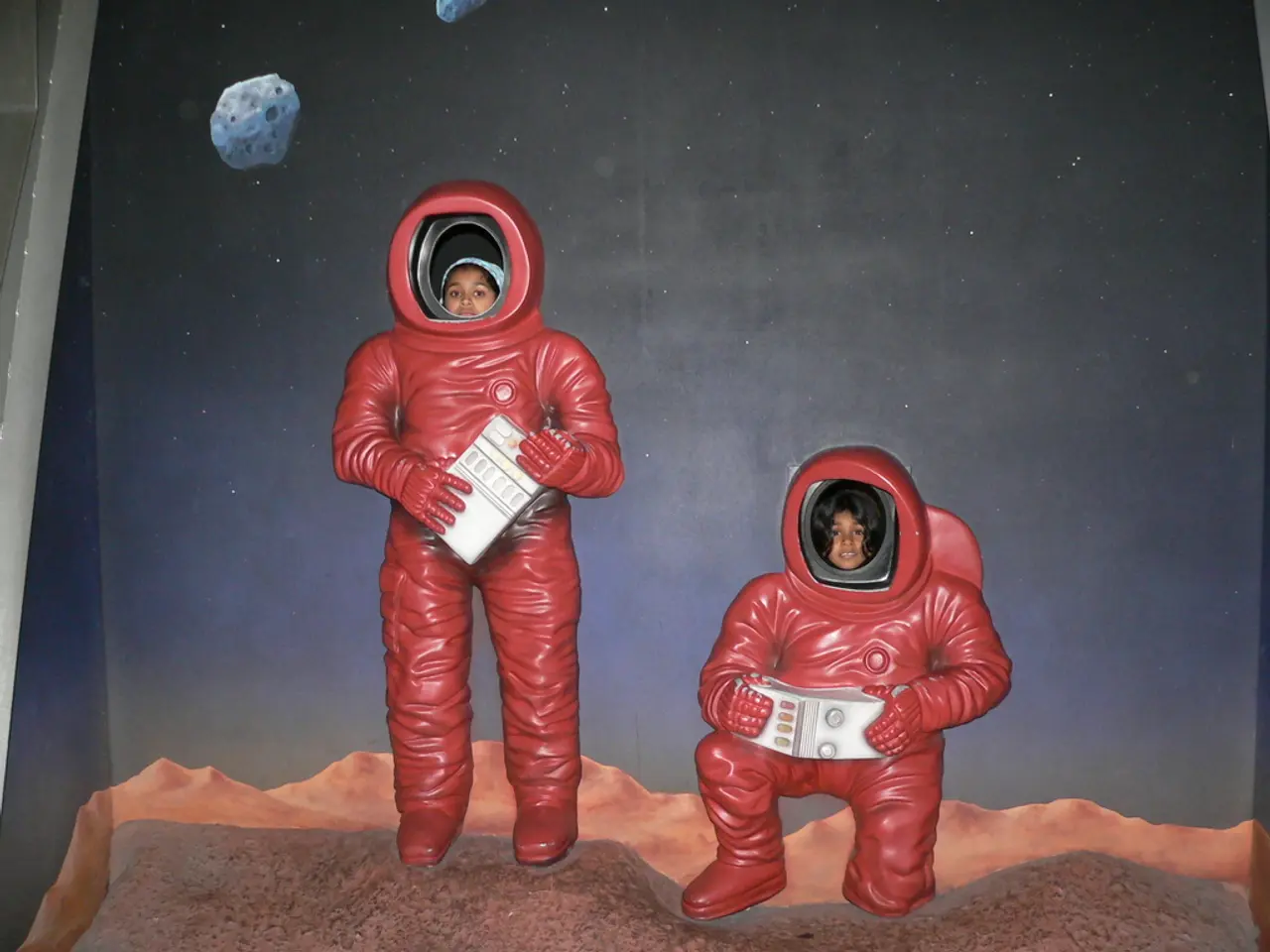Astronaut Kate Rubins, who made history by sequencing DNA on our platform, departs from NASA
Kate Rubins, a NASA astronaut with a doctorate in cancer biology, made history in August 2016 when she successfully sequenced DNA in microgravity aboard the International Space Station (ISS) using a portable device called the MinION. This achievement marked the first time genomics had been performed in space, paving the way for future astronaut health and space exploration [1][2][3].
The DNA sequencing conducted by Rubins had significant implications for astronaut health and space exploration. The capabilities enabled future astronauts to diagnose illnesses or identify microbes on the station or during long-duration missions, thereby improving health monitoring and safety. Furthermore, Rubins' work contributed to biomedical research and strategies for crew health as part of NASA's Human Health and Performance Directorate [4].
The DNA sequencing was carried out using a USB-powered portable device called MinION in the microgravity environment of the International Space Station. This breakthrough opened doors for more onboard biological research and real-time health diagnostics for astronauts, which is essential for deeper space missions and long stays on space stations or other planets [4].
Rubins' first mission on the ISS included the test of an upgraded Russian Soyuz spacecraft and 275 other science investigations. Her second mission involved furthering her work on DNA sequencing and preparing the station for new solar arrays. Rubins is currently appointed as the acting deputy director of NASA's Human Health and Performance Directorate and is also the Astronaut Office's lead for the development of the suits that Artemis crew members will wear while exploring the south pole of the moon [4].
Upon her retirement from NASA after 16 years of service, Rubins expressed her gratitude for the advances at NASA and her privilege to serve and contribute to something meaningful. Joe Acaba, chief of the Astronaut Office at JSC, made a statement about Rubins' retirement, acknowledging her significant contributions to the agency [5]. Rubins continues to work with the U.S. Army Reserve and is presently assigned as an innovation officer to the 75th U.S. Army Reserve Innovation Command's MedBio Detachment out of Boston [6].
References:
[1] NASA. (2016, August 17). NASA Astronaut Kate Rubins Conducts First DNA Sequencing in Space. Retrieved from https://www.nasa.gov/feature/nasa-astronaut-kate-rubins-conducts-first-dna-sequencing-in-space
[2] BBC News. (2016, August 17). DNA sequencing in space: 'A huge step for human health'. Retrieved from https://www.bbc.com/news/science-environment-37154384
[3] Nature. (2016, August 17). First DNA sequencing in space paves the way for astronaut health and space exploration. Retrieved from https://www.nature.com/articles/nature.2016.20530
[4] NASA. (2021, March 29). Kate Rubins. Retrieved from https://www.nasa.gov/astronauts/biographies/rubins_kate
[5] Space.com. (2021, March 29). NASA Astronaut Kate Rubins Retires After 16 Years of Service. Retrieved from https://www.space.com/nasa-astronaut-kate-rubins-retires-after-16-years-of-service.html
[6] Army.mil. (2021, March 29). Army Reserve Major Kate Rubins retires from NASA after 16 years of service. Retrieved from https://www.army.mil/article/259482/army_reserve_major_kate_rubins_retires_from_nasa_after_16_years_of_service
- NASA astronaut Kate Rubins' historical DNA sequencing in space using the MinION device not only paved the way for health monitoring and safety for future astronauts, but also contributed to broader biomedical research under NASA's Human Health and Performance Directorate.
- The breakthrough in DNA sequencing opened avenues for onboard biological research, real-time health diagnostics, and extended space missions, as the process enabled astronauts to identify illnesses or microbes during long-term space missions.
- The capabilities of the MinION device for DNA sequencing have applications not only in space exploration but also in health-and-wellness and science-related fields, offering potential improvements in our understanding of various environmental and cultural aspects of life.
- Technology continues to advance in response to ongoing scientific research and discoveries, such as the DNA sequencing in space, which has furthered the development of aboard devices, such as the MinION, allowing for expanded possibilities in various industries, including health, space exploration, and the environment.




